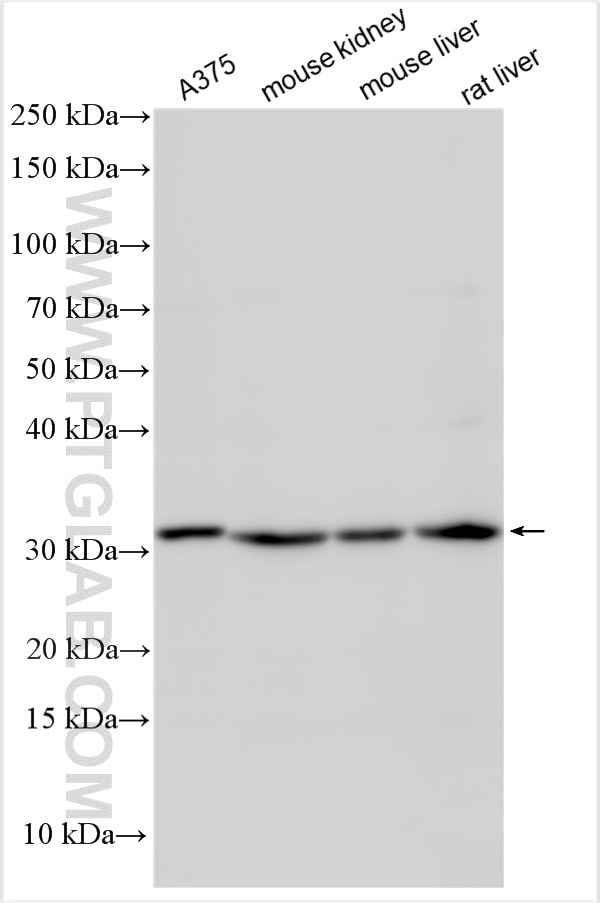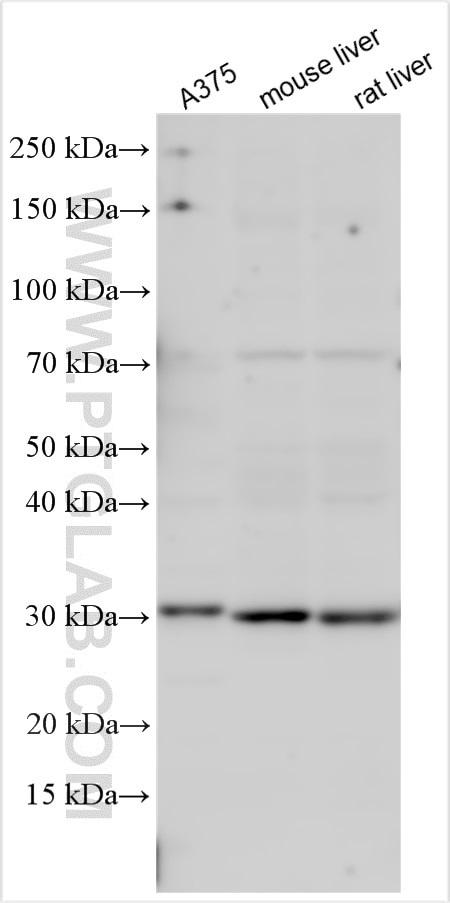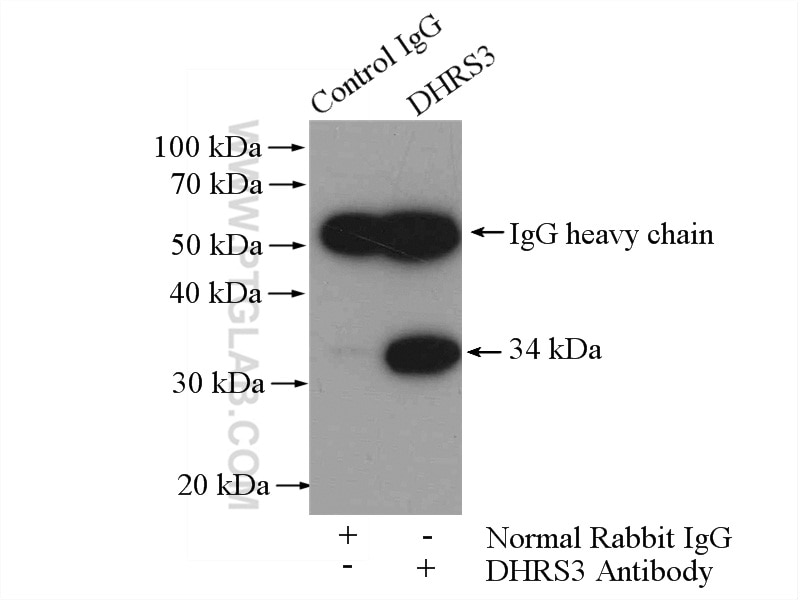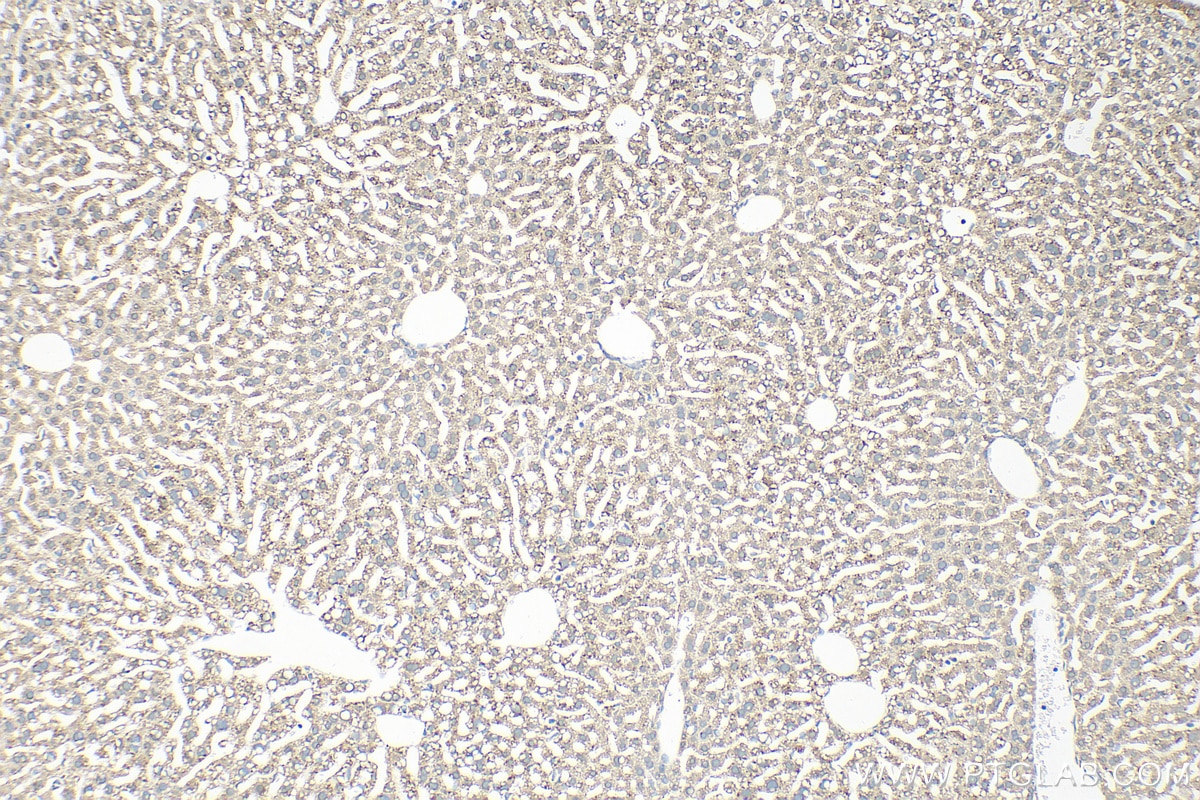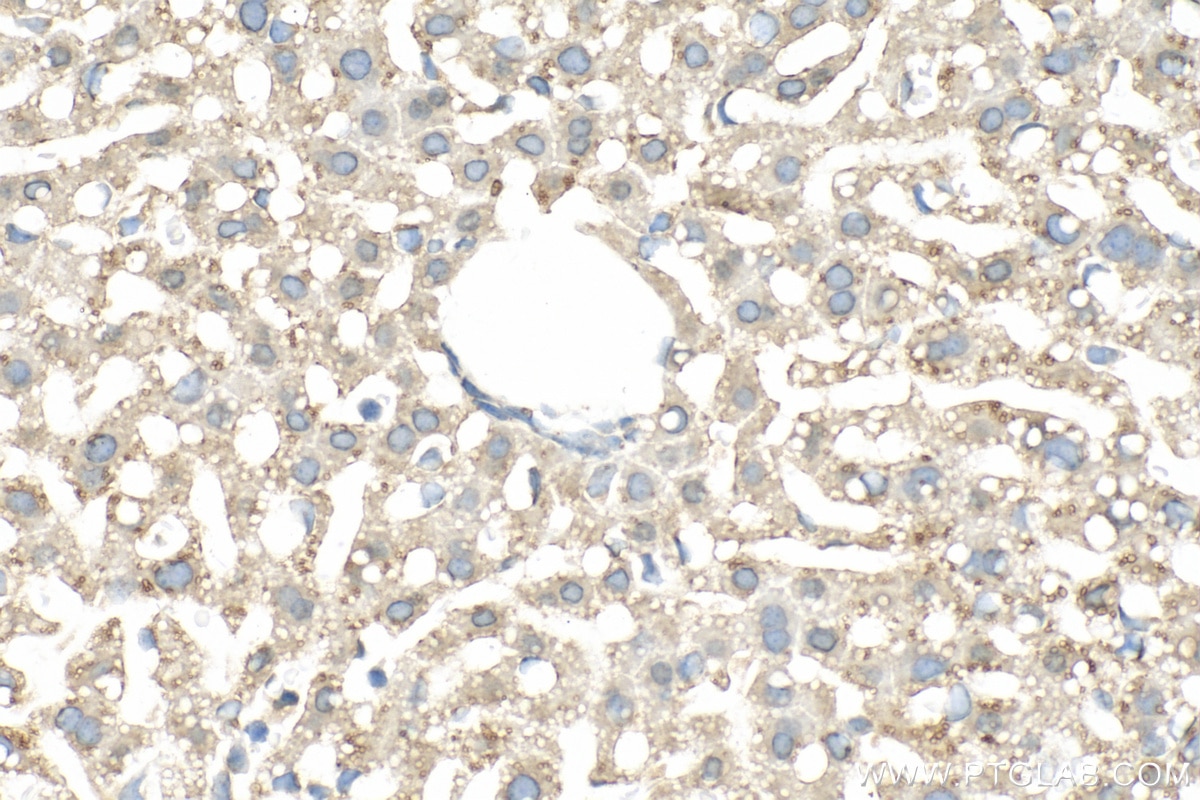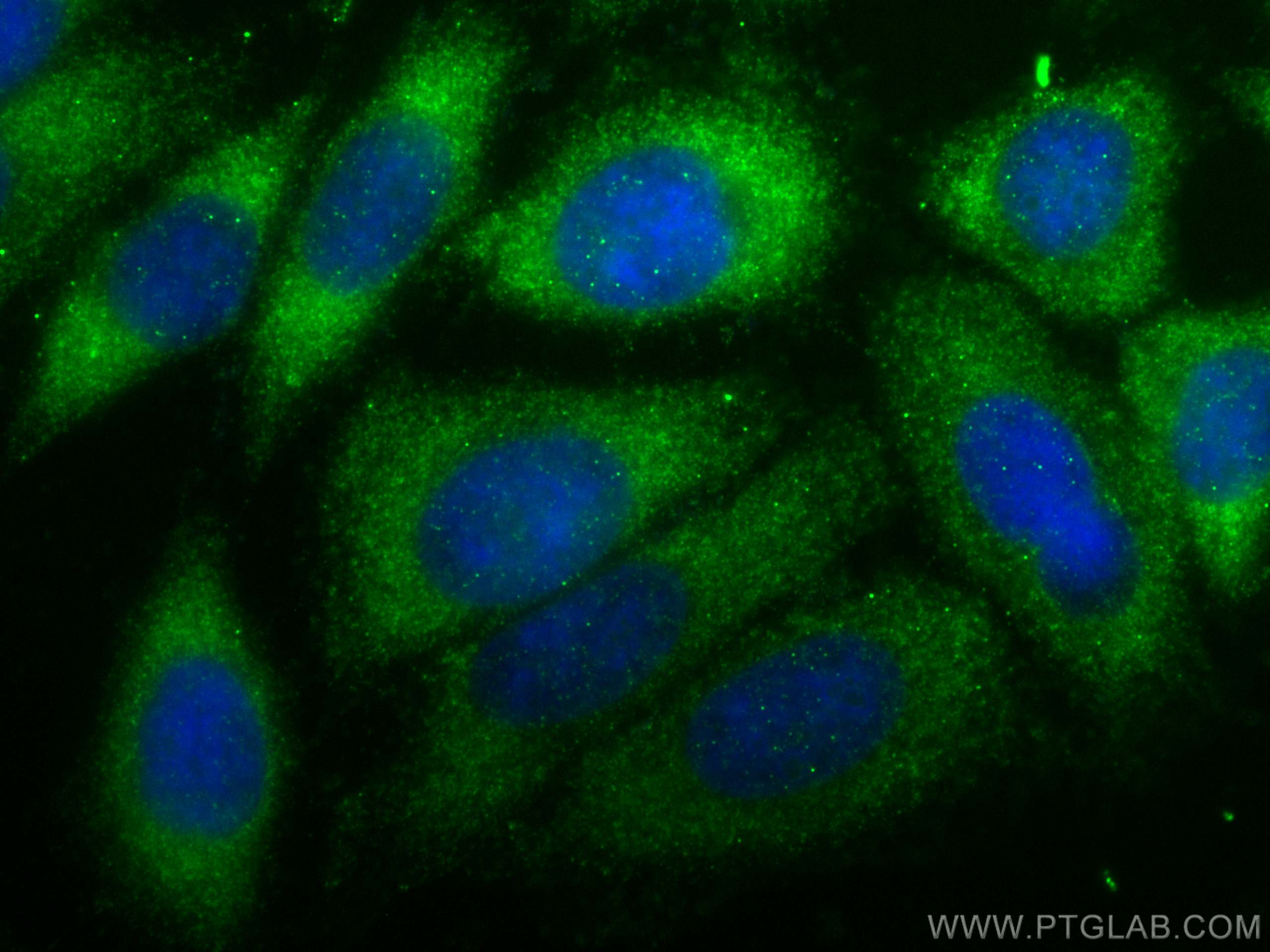- Phare
- Validé par KD/KO
Anticorps Polyclonal de lapin anti-DHRS3
DHRS3 Polyclonal Antibody for WB, IHC, IF/ICC, IP, ELISA
Hôte / Isotype
Lapin / IgG
Réactivité testée
Humain, rat, souris et plus (1)
Applications
WB, IHC, IF/ICC, IP, ELISA
Conjugaison
Non conjugué
N° de cat : 15393-1-AP
Synonymes
Galerie de données de validation
Applications testées
| Résultats positifs en WB | cellules A375, tissu hépatique de rat, tissu hépatique de souris, tissu rénal de souris |
| Résultats positifs en IP | cellules A375 |
| Résultats positifs en IHC | tissu hépatique de souris, il est suggéré de démasquer l'antigène avec un tampon de TE buffer pH 9.0; (*) À défaut, 'le démasquage de l'antigène peut être 'effectué avec un tampon citrate pH 6,0. |
| Résultats positifs en IF/ICC | cellules HepG2, |
Dilution recommandée
| Application | Dilution |
|---|---|
| Western Blot (WB) | WB : 1:500-1:1000 |
| Immunoprécipitation (IP) | IP : 0.5-4.0 ug for 1.0-3.0 mg of total protein lysate |
| Immunohistochimie (IHC) | IHC : 1:50-1:500 |
| Immunofluorescence (IF)/ICC | IF/ICC : 1:200-1:800 |
| It is recommended that this reagent should be titrated in each testing system to obtain optimal results. | |
| Sample-dependent, check data in validation data gallery | |
Applications publiées
| KD/KO | See 3 publications below |
| WB | See 18 publications below |
| IHC | See 2 publications below |
| IF | See 6 publications below |
Informations sur le produit
15393-1-AP cible DHRS3 dans les applications de WB, IHC, IF/ICC, IP, ELISA et montre une réactivité avec des échantillons Humain, rat, souris
| Réactivité | Humain, rat, souris |
| Réactivité citée | Humain, souris, insecte |
| Hôte / Isotype | Lapin / IgG |
| Clonalité | Polyclonal |
| Type | Anticorps |
| Immunogène | DHRS3 Protéine recombinante Ag7589 |
| Nom complet | dehydrogenase/reductase (SDR family) member 3 |
| Masse moléculaire calculée | 34 kDa |
| Poids moléculaire observé | 30-34 kDa |
| Numéro d’acquisition GenBank | BC002730 |
| Symbole du gène | DHRS3 |
| Identification du gène (NCBI) | 9249 |
| Conjugaison | Non conjugué |
| Forme | Liquide |
| Méthode de purification | Purification par affinité contre l'antigène |
| Tampon de stockage | PBS with 0.02% sodium azide and 50% glycerol |
| Conditions de stockage | Stocker à -20°C. Stable pendant un an après l'expédition. L'aliquotage n'est pas nécessaire pour le stockage à -20oC Les 20ul contiennent 0,1% de BSA. |
Informations générales
DHRS3(Short-chain dehydrogenase/reductase 3) is also named as retSDR1,DD83.1 and belongs to the short-chain dehydrogenases/reductases (SDR) family. It catalyzes the reduction of all-trans-retinal to all-trans-retinol in the presence of NADPH. It is detected high levels of expression in fetal kidney, liver, and lung and in adult heart, placenta, lung, liver, kidney, pancreas, thyroid, testis, stomach, trachea, spinal cord and lower levels in skeletal muscle, intestine, and lymph node. retSDR1 is barely detectable in adrenals, brain, thymus, and hematopoietic tissues(PMID:11861404). retSDR1 may play a more general role in retinol metabolism since its expression was observed in many fetal and adult tissues(PMID:20543567).
Protocole
| Product Specific Protocols | |
|---|---|
| WB protocol for DHRS3 antibody 15393-1-AP | Download protocol |
| IHC protocol for DHRS3 antibody 15393-1-AP | Download protocol |
| IF protocol for DHRS3 antibody 15393-1-AP | Download protocol |
| IP protocol for DHRS3 antibody 15393-1-AP | Download protocol |
| Standard Protocols | |
|---|---|
| Click here to view our Standard Protocols |
Publications
| Species | Application | Title |
|---|---|---|
J Clin Endocrinol Metab Elevated periimplantation uterine natural killer cell density in human endometrium is associated with impaired corticosteroid signaling in decidualizing stromal cells. | ||
FASEB J The retinaldehyde reductase DHRS3 is essential for preventing the formation of excess retinoic acid during embryonic development. | ||
J Biol Chem Retinol dehydrogenase 11 is essential for the maintenance of retinol homeostasis in liver and testis in mice.
| ||
FASEB J Liver regeneration and ethanol detoxification: A new link in YAP regulation of ALDH1A1 during alcohol-related hepatocyte damage. | ||
Mol Endocrinol Induction of 11β-HSD 1 and activation of distinct mineralocorticoid receptor- and glucocorticoid receptor-dependent gene networks in decidualizing human endometrial stromal cells. | ||
J Biol Chem Retinol dehydrogenase 10 but not retinol/sterol dehydrogenase(s) regulates the expression of retinoic acid-responsive genes in human transgenic skin raft culture. |
